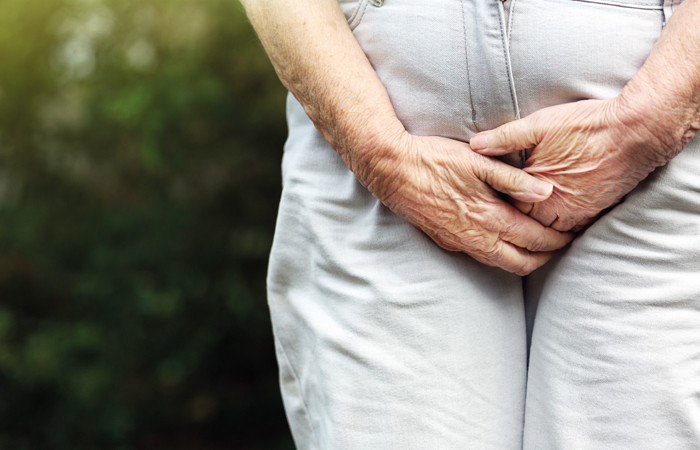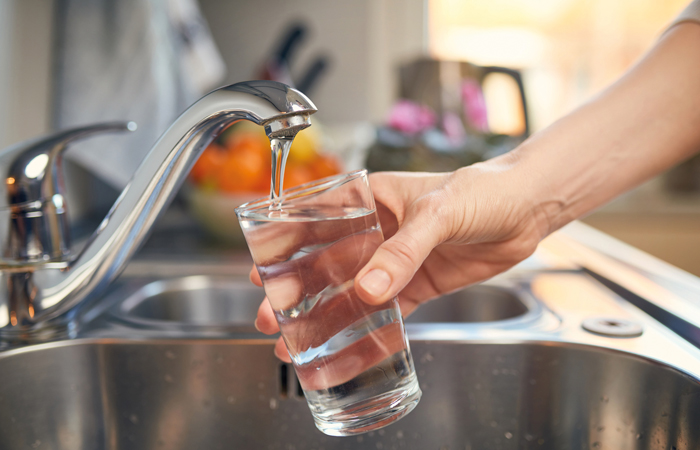Strength in weakness
In Conditions
Follow this topic
Bookmark
Record learning outcomes
Breaking the stigma surrounding bladder weakness can help pharmacy teams support those who suffer have access to information and products that may change their lives
People often believe bladder weakness is part of the natural ageing process and that little can be done about it – yet around 80 per cent of urinary incontinence can be cured or improved. Similarly, there are many products that pharmacy teams can recommend to customers suffering with the condition to improve their lives.

According to TENA, one in three women and one in four men in the UK suffer from urinary incontinence – that’s more than nine million people. As well as having an impact on people physically, the condition can have a negative impact on mental health. The charity Bladder Health UK highlights that urinary incontinence often causes anxiety and loss of self-esteem, so talking to someone who has knowledge, understanding and care is important.
Many people are too embarrassed to speak to their GP about their symptoms, often preferring instead to rely on pads and similar products to cope with any leakage, which means a pharmacy may be their first port of call. This offers huge opportunity for pharmacy teams to offer support and advice to those who need it.
Identifying causes
Bladder weakness is often associated with the menopause and getting older in general. However, urinary incontinence can affect women of all ages – and men too. Pregnancy and childbirth can put a strain on the pelvic floor muscles, and weight gain can make this worse. Incontinence can be caused by a problem with the bladder itself, for example an overactive bladder, but it can also be related to other health issues, such as diabetes or poor kidney function. Drinking too much alcohol, not drinking enough fluids or taking certain medicines can also cause it, meaning that those who suffer from incontinence can potentially be from a diverse pool of customers.
Paula Pitcher, specialist bladder and bowel nurse at Bladder Health UK, stresses that getting a proper diagnosis is key. “The first step would be to rule out a urinary tract infection. It is important to seek advice and support from a GP or nurse to rule out any other underlying causes as well,” she says.
The most common types of bladder weakness in women are:
- Stress incontinence – when urine leaks from the bladder during coughing, sneezing or physical activity
- Urge incontinence – when people experience a sudden feeling to empty the bladder and quite often happens on the way to the toilet. This is also known as an overactive bladder
- Some women experience a combination of both of these types, which is known as mixed urinary incontinence.
Overflow incontinence is more common in men, occurring when there’s a blockage or obstruction to the bladder opening. This may be caused by an enlarged prostate gland, bladder stones or constipation, and can make it impossible for people to empty their bladder properly. Gail Stephens, specialist pelvic health physiotherapist at Dynamic Health in Cambridgeshire, says men with stress incontinence should have their prostate assessed by a GP. “Further treatment can then be targeted to either the prostate or the bladder and sometimes both,” she explains. “Following any surgery for prostate problems, stress urinary incontinence can present a problem for men, and pelvic floor muscle training is very important.”
Various devices are available through pharmacies to help strengthen pelvic floor muscles
Self care
Pharmacy teams can inform customers that they may be able to manage, and prevent, bladder weakness by making simple changes to their lifestyle. “We would encourage everyone to practise good self care,” says pelvic health physiotherapist Myra Robson, creator of the Squeezy App and co-creator of the PelvicRoar website. “Try pelvic floor exercises, appropriate drinking and bladder and bowel habits, losing excess weight and managing conditions such as hypertension and diabetes as well as possible. If these measures don’t cure symptoms, then always seek help.”
Lifestyle tips to recommend to customers include:
- Increasing fluid intake. Not drinking enough fluids can make the urine more concentrated. This can make the bladder more sensitive to smaller amounts of urine, which increases urinary frequency. Pharmacy customers should be advised to drink at least 1.5 to two litres (six to eight glasses) of fluids each day
- Limiting certain foods and drinks. Acidic foods, alcohol, carbonated drinks and caffeine found in tea, coffee, cola and chocolate can irritate the bladder
- Healthy eating. Being overweight can make bladder problems worse. A balanced, low-fat, high-fibre diet, with at least five portions of fruit and vegetables each day, is recommended
- Give up smoking. A ‘smoker’s cough’ can place extra pressure on pelvic floor muscles.
Broaching the topic

Bladder leakage can be a sensitive topic. Pharmacy teams need to be confident in their knowledge of the condition so that they can reassure customers that there is nothing to be embarrassed about and that solutions can be found.
“We have found the best approach is to normalise the condition, making it easier to broach,” says Stuart Gale, chief pharmacist and owner of Frosts Pharmacy Group. “Train staff so that they can start a conversation: Do you find that product works for you? Can I suggest something that may be more effective? Have you tried these? The more awareness there is among staff, the better able they will be to support customers and point them in the right direction.”
Making the bladder weakness fixture easier to browse can take away some of the embarrassment, so that customers can easily find what they want without asking at the counter. “We find that women ask for help more than men, or women come in for men’s incontinence products,” says Lila Thakerar, superintendent pharmacist at the Shaftesbury Pharmacy in Harrow, Middlesex. “We display these in a very prominent position as customers walk in, similar to condoms, so they can find them easily and bring them to the counter.”
Bold displays and leaflets placed alongside the products can help customers choose the right products for them. Myra Robson, pelvic health physiotherapist, also recommends placing a simple flyers in bags of relevant medications, such as those for prostate health, with links to relevant websites and advice on seeing a GP or talking to the pharmacist for more information.
Pelvic floor exercises
The pelvic floor muscles hold pelvic organs in place, including the bladder, uterus and rectum. If these muscles are weak, this can lead to urinary incontinence. Pelvic floor exercises – also known as Kegel exercises – can strengthen or retrain weak pelvic floor muscles in both men and women. “Daily pelvic floor exercises have solid evidence behind them as a preventative strategy and treatment,” explains Myra. “The exercises have around 80 per cent cure rate for stress incontinence in women and are proven to reduce the urge in people with overactive bladder, as well as reduce a mild prolapse, reduce post-prostatectomy incontinence in men and improve erectile dysfunction.”
Ideally, pelvic floor exercises should be taught by a specialist physiotherapist or continence nurse to make sure people are doing them correctly. “There are slow and fast Kegel exercises, and it’s best to alternate between the two, ideally for five minutes at least three times a day,” says Stephanie Taylor, managing director of Kegel8. “First, sit, stand or lie with your knees slightly apart. Slowly tighten your pelvic floor muscles starting with your anus, as if you are trying not to pass wind – the biggest part of your pelvic floor muscle is located here, then tighten around your vagina, squeeze both areas and lift, or suck-up your muscles, as hard as you can. Hold for the count of five, then relax, repeat five times. Then, repeat as before but more quickly. Hold for two seconds, then relax for two seconds. Repeat five times. As your Kegel muscles become stronger, increase the length of time you ‘squeeze and lift’. You should aim to hold each slow Kegel for a count of 10.”
Various devices are available through pharmacies to help strengthen pelvic floor muscles. These range from simple biofeedback measuring devices to those providing neuromuscular electrical stimulation directly to the pelvic floor muscles. Many devices are backed by clinical research, but specialist physiotherapists recommend that pharmacy customers seek one-to-one advice before buying them.
“Gadgets do have a place but can be expensive and often sit in a drawer,” says Myra. “It is much better for someone to have a personalised assessment so that they buy the type of gadget that is likely to work best for them.”
Overflow incontinence is more common in men
Pads and pants
The demand for incontinence products is growing year on year, especially as the population ages, according to the Mintel Feminine Hygiene and Sanitary Protection Products – UK report published in January 2019. Pharmacy teams should encourage customers to seek help for bladder weakness. Whilst customers are strengthening their pelvic floor muscles or waiting for treatment, they are likely to want to use pads, pants and shields to deal with any leakage, which pharmacy teams can recommend.
According to Lisa Myers, marketing manager at TENA, many women use sanitary towels and liners rather than bladder weakness products that have been specifically designed for urine and so they should be advised about the importance of using products designed for the job. Although some incontinence products are unisex, others are specifically designed to suit men and women’s different bodies. Men’s ranges include specially shaped shields, while women can buy discreet ultra-thin liners and pants that look and feel like regular underwear but have high absorbency and odour control.
Pharmacies should stock a varied range of products to suit different customer needs. “Products are largely personal, but there is a difference depending on the type of incontinence,” says Myra. “Stress incontinence is usually small leaks so a low-absorbency product or pants with an absorbent lining work well. Urge incontinence is usually a larger volume of urine so a higher absorbency is needed.”
Skincare solutions
Skincare is important. According to Bladder Health UK, over 50 per cent of people with incontinence suffer from sore and broken skin, known as incontinence-associated dermatitis. Regularly using moisturisers for skin protection can cause further irritation and reduce the absorbency of incontinence pads. Instead, pharmacy teams should advise customers to use a specific barrier cream as part of their daily skin cleansing routine.
“There are creams specifically for contact dermatitis and moisture lesions where the skin has been affected by urine or faecal leakage,” says Paula Pitcher, specialist bladder and bowel nurse at Bladder Health UK. “Don’t use oil-based creams with the pads, and don’t use talc near the pad or in the groin or for personal care as it can encourage fungal growth.”
